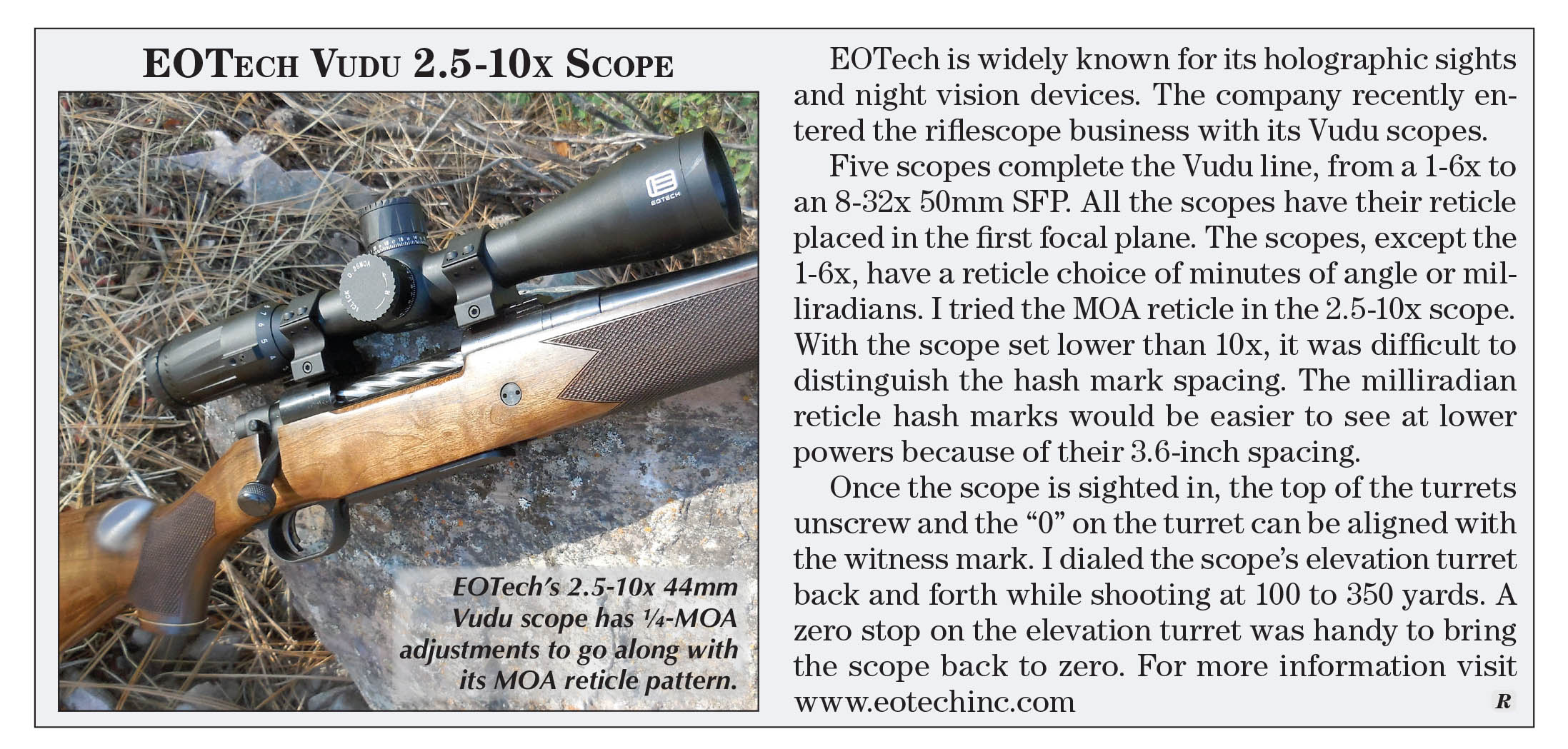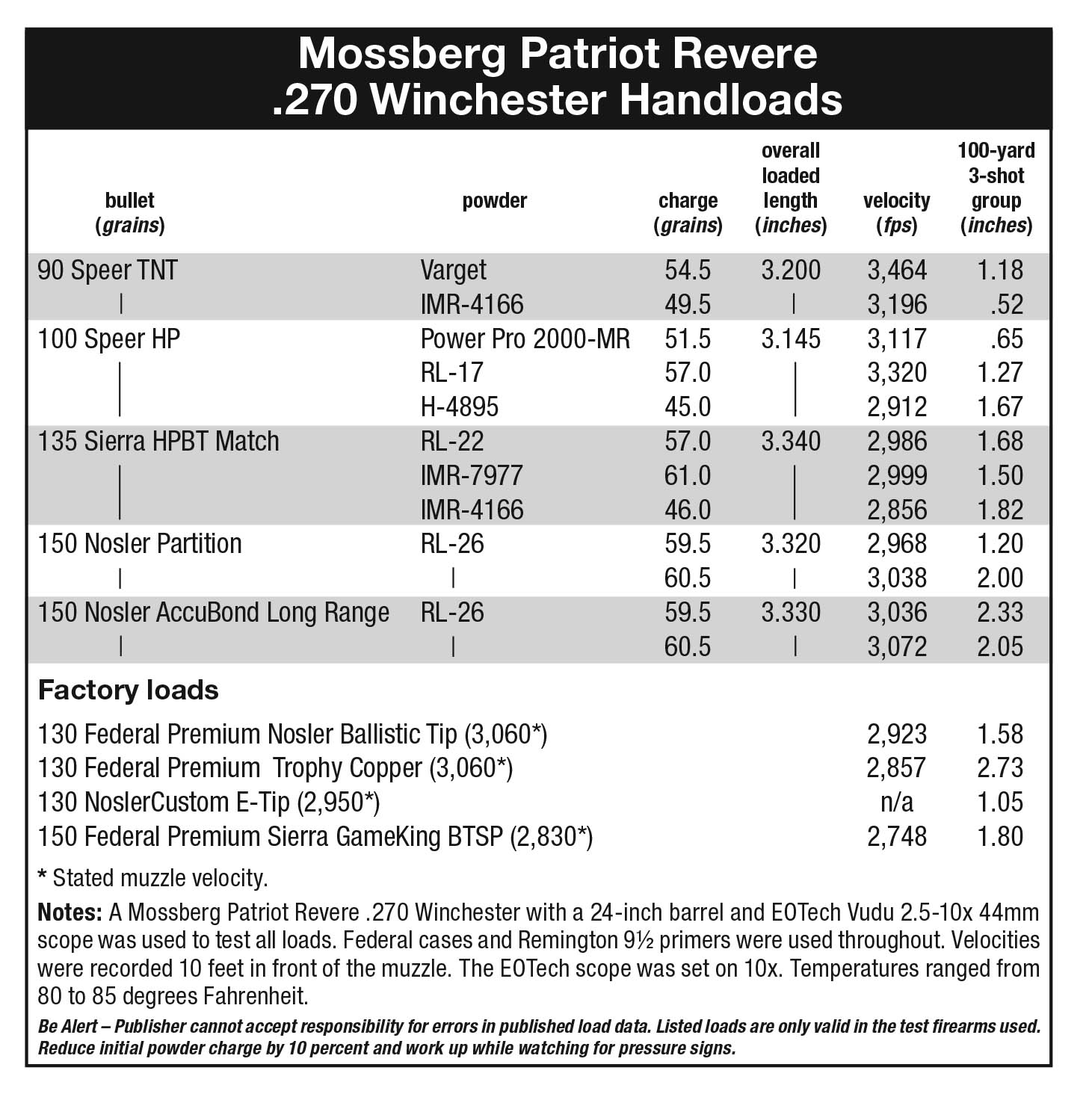Mossberg Patriot Revere
A .270 Winchester With an Updated Stock
feature By: John Haviland | March, 18
Not too long ago the clerk at the checkout counter asked if I needed help carrying out my groceries. That question left me somewhat chagrined – was my appearance so decrepit? Later I took it as a compliment, however, because it meant I had been around long enough to witness bolt-action hunting rifles evolve into a combination of ease of use and attractive looks, heading away from stocks ornamented with humps and pinched edges that hindered shooting and appearance. For many admirers of bolt-action hunting rifles, that means deep-blued steel in a stock of pleasingly figured walnut with graceful lines and restrained decoration.
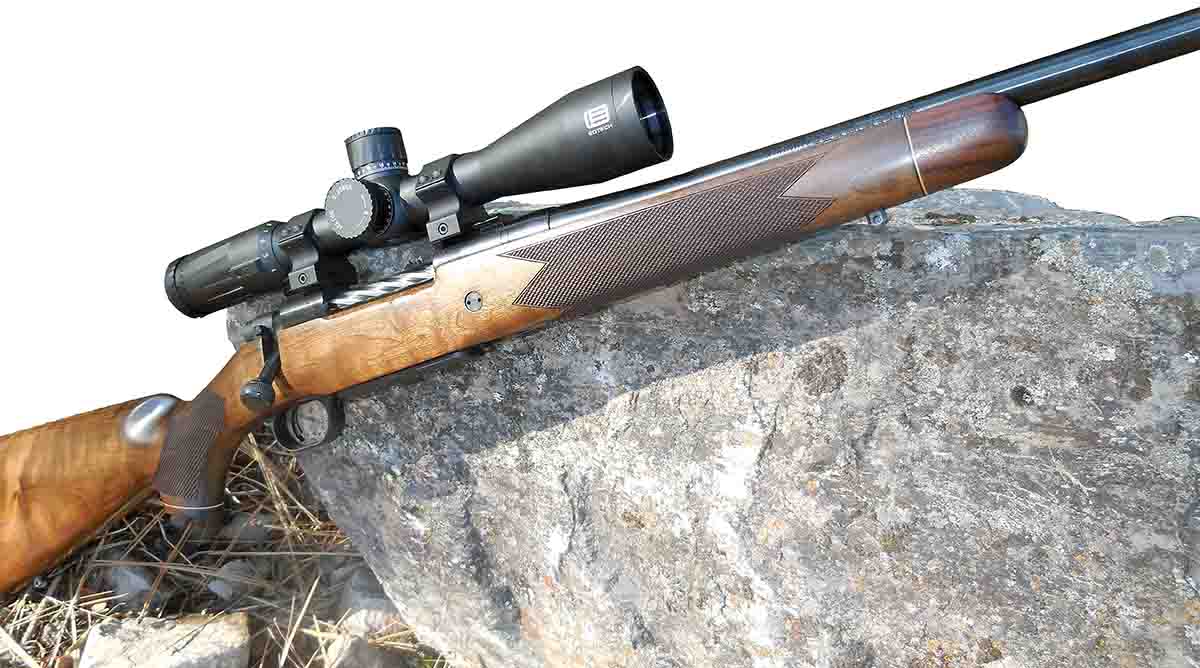
Mossberg is taking hunters back to that time and look with its Patriot Revere, an affordable bolt-action hunting rifle with a nicely figured walnut stock reminiscent of those on old Model 70 Winchesters.
Over the years Mossberg has built serviceable and sturdy firearms. However, Mossberg rifles have never featured what could be called classic stocks. Mossberg has gone elegant with the Revere, using a stock made of what it calls “2.0 Grade European walnut” sealed with an oil finish. The stock has a trace of decoration with a rosewood forend tip and grip cap connected with pale maple spacers. The bordered, point-pattern checkering panel wraps completely around the forearm and fully on both sides of the grip. Under a magnifying glass, the diamonds are not as sharp as they could be.
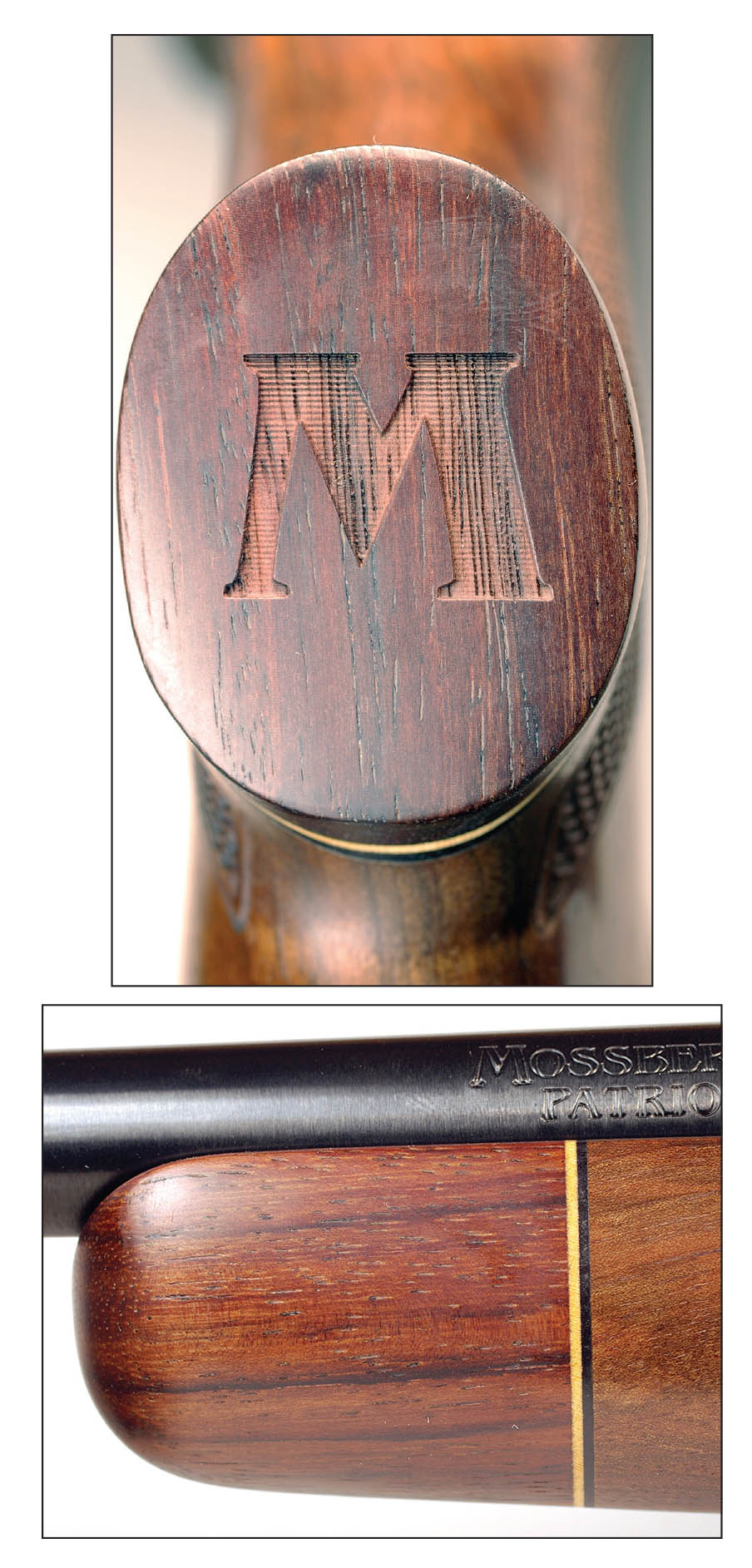
The Revere’s action contains some notable features. The action’s recoil lug is a steel plate sandwiched between the barrel breech and front of the receiver. The 1.30-inch-wide plate is large, and nearly .60 inch of it extends into the recoil mortise in the stock. A block of wood more than an inch square separates the cutout for the recoil lug and the magazine well opening. If the large recoil lug and chunk of stock are not enough to absorb recoil, there is also a steel cross bolt through the wood.
The front receiver ring is round. An extension on the front of the polymer magazine frame is round on top to cradle the receiver ring. The bottom of the extension is flat to match the wide bedding surface in the stock. The front action screw extends up through this bedding block to pull the receiver ring tight into the stock.
The rear action screw of many bolt actions threads into the rear of their thin tang. This can strain the receiver when the rear action screw is tightened if the stock bedding is incorrect. The Patriot’s rear action screw threads into the bottom of the rear receiver ring. An extension on the rear of the magazine frame provides a flat on the stock for the receiver ring to join the stock squarely and tightly.
The Patriot action has an old-school, large ejection port. This, and the wide cut on the bottom for the magazine, leaves only a thin line of steel supporting the right side of the receiver. This may weaken the receiver so it flexes some on firing. But a minor reduction in accuracy is a fair trade for a rifle that allows easy clearing of a jammed cartridge, dropping a cartridge on top of the magazine follower and shoving the bolt closed, and snapping cartridges into the inserted magazine.
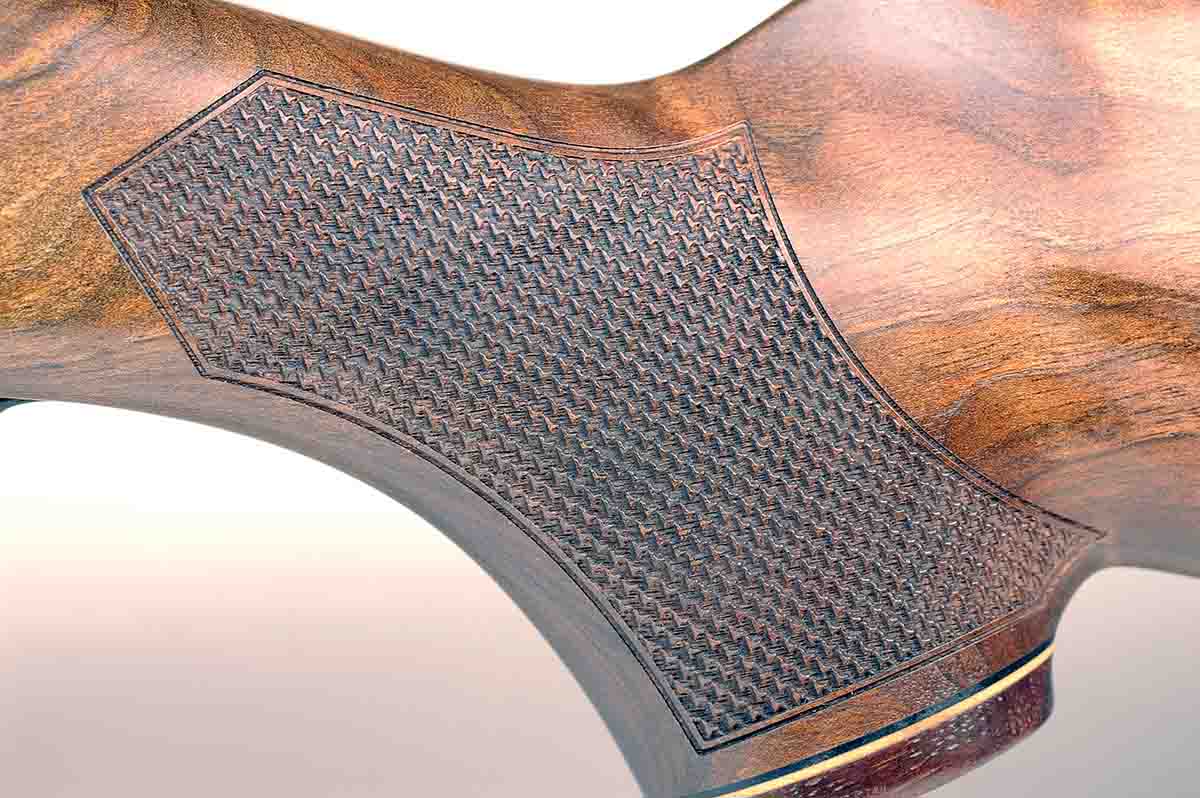
The rifle’s Lightning Bolt Action trigger is adjustable from 2 to 7 pounds by turning a screw at the front of the trigger housing. The trigger on my test rifle came from the box set at 3 pounds, and I left it alone. It had a slight amount of creep, but that disappeared after shooting 100 rounds or so through the rifle.
The Patriot Revere’s barrel is button-rifled. A look in the bore with a Lyman borescope showed smooth lands and grooves from end to end. The tops of the lands were coated with copper fouling after firing the rifle about 80 times. The fouling dissolved after squirting Gunslick Foaming Bore Cleaner in the bore, letting it sit overnight and wiping it out the next day. The rifle put the first bullet shot from a clean barrel, and one from a fouled barrel that had sat for a week, in the same place as subsequent bullets.
The rifle’s polymer magazine holds five .270 Winchester cartridges in staggered formation. The magazine detaches, and cartridges can be loaded into the magazine by sliding them back under the lips or shoving them in from the top as the polymer jaws spread slightly. Cartridges can also be loaded into the magazine with it snapped in place in the rifle.
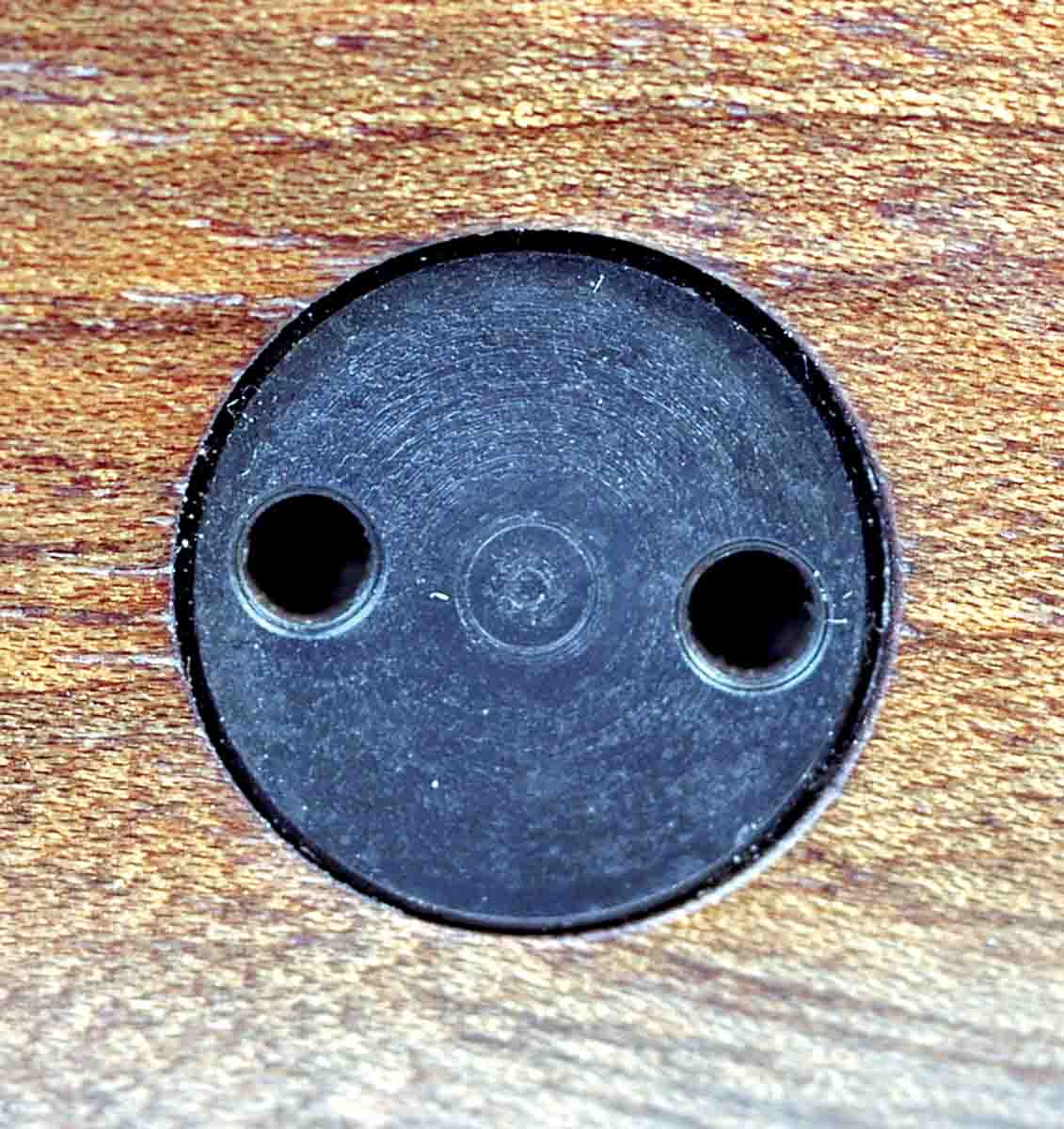
The Revere’s stock is impressive and the lines of the stock are pleasing to the eye. For instance, the magazine extends slightly below the lower line of the stock. A bit of a belly on the stock that encloses the magazine blends seamlessly into the lower contour of the stock. There is a gap between the stock’s barrel channel and the barrel so the barrel is free floated. But that space is even along both sides of the barrel, and the persnickety rifleman would have to look closely to notice the gap.
Most importantly, the stock aids shooting. The rifle weighs somewhat over 9 pounds with an EOTech Vudu 2.5-10x 44mm scope mounted on the rifle with EOTech rings. At that weight, with its soft, thick recoil pad, the recoil generated by a .270 Winchester cartridge is not bad. Felt recoil is further moderated by the Revere’s cheekpiece and wide comb with a slight forward pitch that keeps the cheek tight against the stock. The fairly gentle curve of the grip provides plenty of room for the hand, and the rounded bottom of the forearm that tapers slightly toward the top and tip fits the forward cupped hand. (If I was dictator, I would slim the 5.25-inch diameter grip by nearly an inch and cut 3 inches off the 10-inch-long forearm.)
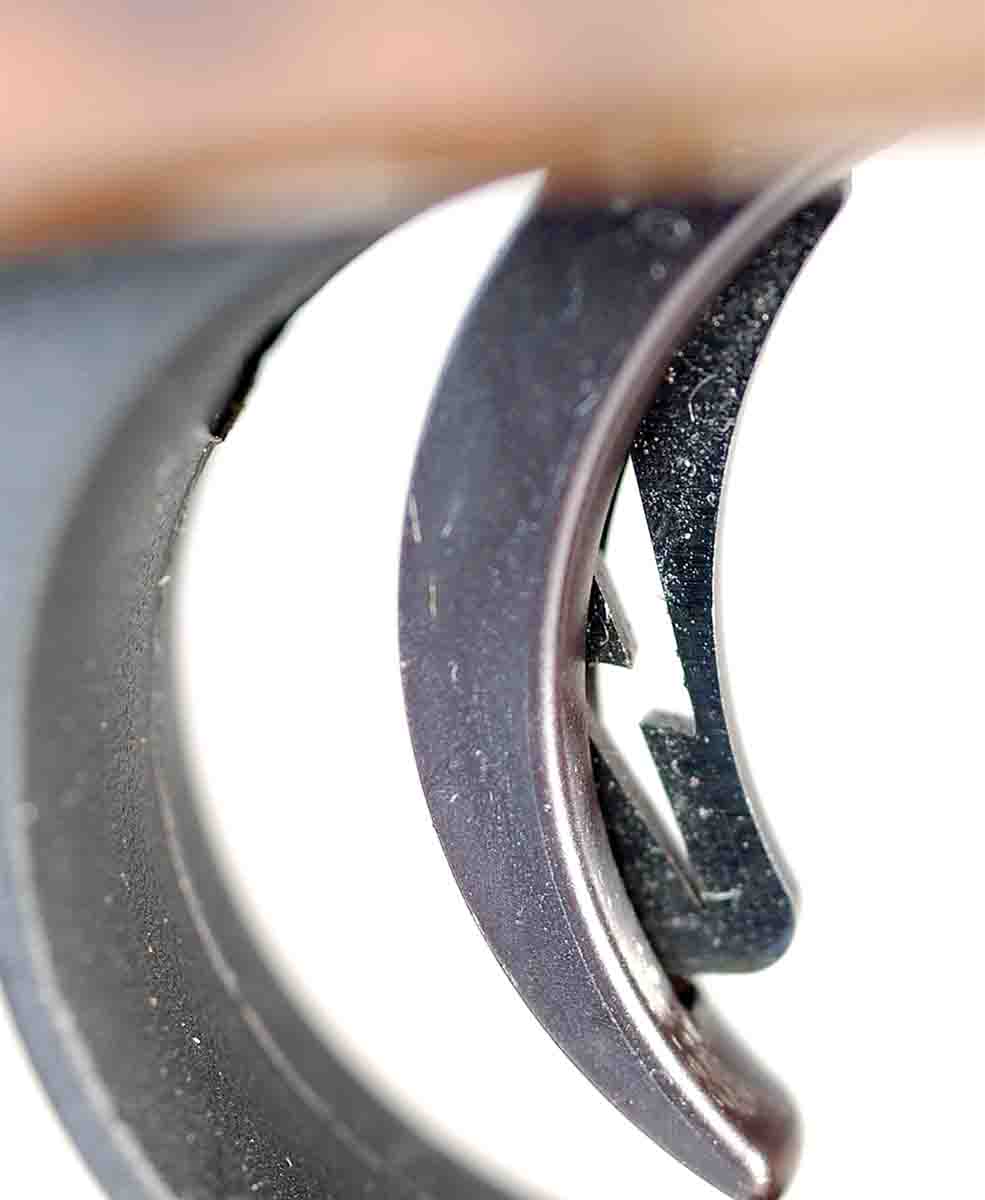
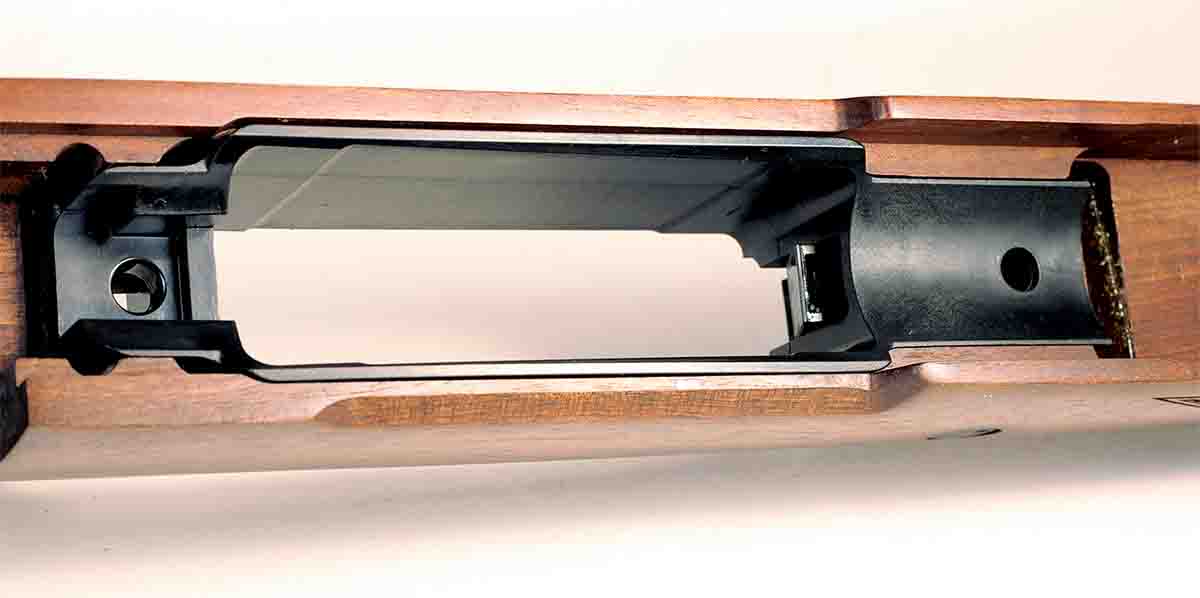
A gently recoiling practice load consisted of 45.0 grains of H-4895 paired with Speer 100-grain bullets. At first the load shot groups with a vertical spread, and that was expected due to extreme velocity spreads ranging from 70 to 90 fps. But groups tightened up quite a bit after a few trips to the range. Bullets from this load hit right on aim at 100 yards, with 150-grain bullets at full velocity hitting 2 inches above aim at that distance.
Looking for a load for the Revere .270 in preparation for an upcoming elk hunt, I checked Alliant Powder’s Reloader’s Guide, which showed velocities of slightly more than 3,000 fps for various 150-grain bullets loaded with Reloder 26. Those velocities are about 100 fps faster than any other powders I’ve tried over the years shooting 150-grain bullets. For the .270 loads, the Alliant guide used Federal cases and Federal 210 primers, and listed only a minimum overall cartridge length. I used Federal cases, Remington 91⁄2 primers and cartridge lengths of 3.320 inches for Nosler 150-grain Partitions, and 3.330 inches for Nosler 150-grain AccuBond Long Range bullets.
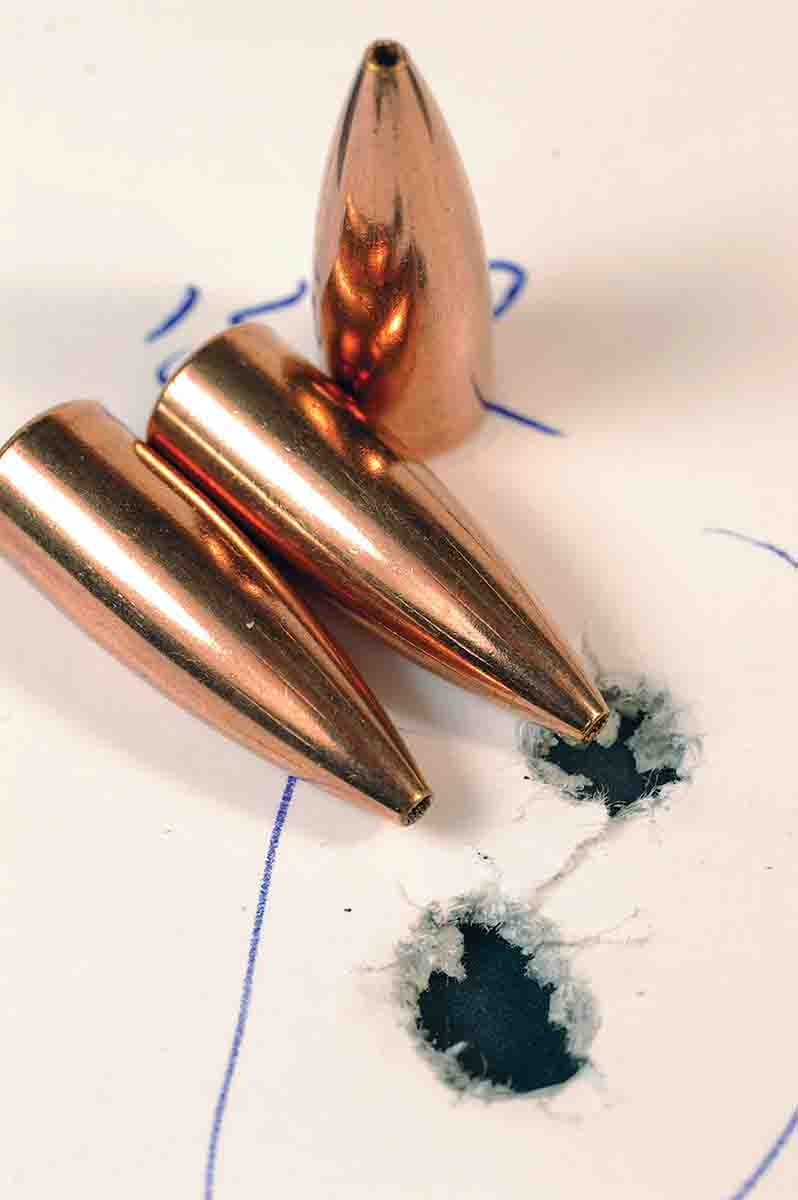
Partitions provided 2,968 fps fired with 59.5 grains of Reloder 26, and 3,038 fps with 60.5 grains. The same powder charges shot AccuBond Long Range bullets at 3,036 fps and 3,072 fps, recorded 10 feet in front of the muzzle of the Revere’s 24-inch barrel. The Partitions at 2,968 fps shot the tightest groups, and that is what I settled on for an elk load. Mega-magnum fans dismiss the .270 Winchester as marginal for killing elk. But 150s going that fast will kill an elk at any reasonable distance.
As Partition bullets are rather expensive, Sierra 150-grain GameKing bullets were loaded with 59.5 grains of Reloder 26 for a practice load. The comb cradled my erect head when sitting with the rifle supported on shooting sticks. Shooting prone, my cheek stayed tight on the comb and I could see through the scope with the middle of the butt positioned on the top of my shoulder. Shooting steel plates at 300 yards was a walk in the park. A paper target at 300 yards recorded three bullets in a 3.47-inch group. That is sufficient accuracy for as far as I will shoot at an elk.
The standard-length action Patriot Revere is also chambered in .30-06 and .300 Winchester Magnum. The short-action Revere is chambered in .243 Winchester, 6.5 Creedmoor and .308 Winchester. All rifles feature a 24-inch barrel. MSRP is $823. For more information visit www.Mossberg.com.
